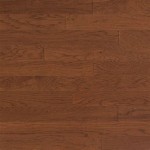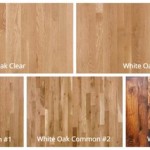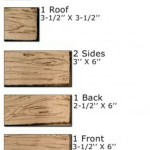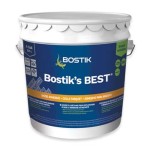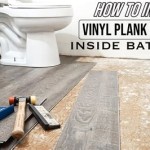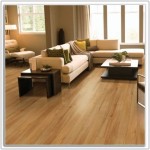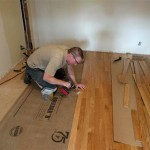Can You Put Vinyl Plank Flooring Over OSB? A Comprehensive Guide
Oriented strand board (OSB) is a common subfloor material used in construction. Its affordability and structural integrity make it a popular choice for both residential and commercial projects. Vinyl plank flooring, known for its durability, water resistance, and ease of installation, is also frequently selected for various flooring applications. Combining these two materials raises a pertinent question: can vinyl plank flooring be installed directly over an OSB subfloor? The answer is not a simple yes or no; it depends on several factors that need careful consideration.
The success of installing vinyl plank flooring over OSB hinges on the quality and condition of the OSB subfloor, the type of vinyl plank flooring used, and the preparation undertaken before installation. Ignoring these factors can lead to issues such as uneven flooring, premature wear, and even failure of the vinyl plank installation. This article will examine the critical aspects to consider when placing vinyl plank flooring over OSB to help ensure a long-lasting and aesthetically pleasing result.
Assessing the OSB Subfloor: Preparation is Paramount
Before embarking on the installation process, a thorough assessment of the OSB subfloor is essential. This assessment will determine whether the OSB is suitable for direct installation of vinyl plank flooring or if any corrective measures are necessary. Key aspects to evaluate include:
Levelness: One of the most crucial factors is the levelness of the OSB subfloor. Vinyl plank flooring requires a relatively flat and even surface for proper installation and performance. Any significant dips, humps, or unevenness will translate to the finished floor, creating an unsightly appearance and potentially causing structural problems. Minor imperfections can often be remedied with patching compounds, but significant unevenness may necessitate more extensive repairs or even replacement of sections of the OSB.
Levelness can be accurately assessed using a long straightedge or a level combined with a measuring tape. Place the straightedge across various sections of the subfloor and measure any gaps between the straightedge and the OSB surface. A variation of more than 3/16 inch over a six-foot span is generally considered unacceptable for vinyl plank installation.
Smoothness: The surface of the OSB must be smooth and free from any protrusions. Splinters, raised wood fibers, and protruding fasteners can all create imperfections that will be visible through the vinyl plank flooring and can even damage the planks over time. These imperfections can also prevent the vinyl planks from properly adhering to the subfloor, especially with peel-and-stick or glue-down installations.
A thorough sanding of the OSB surface is often necessary to achieve the required smoothness. Use a belt sander or orbital sander with a medium-grit sandpaper to remove any imperfections. Subsequently, vacuum the entire area to remove any dust or debris generated during the sanding process.
Moisture Content: Moisture is a significant enemy of both OSB and vinyl plank flooring. Excess moisture can cause the OSB to swell, warp, or even rot, leading to problems with the installed flooring. The moisture content of the OSB should be checked using a moisture meter before installation. Generally, the moisture content should be below 12% for successful vinyl plank installation.
If the moisture content is too high, identify and address the source of the moisture. This may involve repairing leaks, improving ventilation, or allowing the OSB to dry naturally over time. Using a dehumidifier can also help to accelerate the drying process. Installing a moisture barrier between the OSB and the vinyl plank flooring can provide an additional layer of protection against moisture migration.
Structural Integrity: Ensure that the OSB subfloor is structurally sound and free from any signs of damage, such as rot, decay, or delamination. These issues can compromise the integrity of the subfloor and lead to premature failure of the vinyl plank flooring. Any damaged sections of the OSB should be replaced before proceeding with the installation. Proper fastening of the OSB to the floor joists is also crucial to prevent movement and ensure a stable base for the vinyl plank flooring.
Cleanliness: Thoroughly clean the OSB subfloor before installing the vinyl plank flooring. Remove any dirt, dust, debris, paint splatters, or adhesive residue that may be present. Vacuuming and damp-mopping the surface can help to ensure that it is clean and ready for installation. Avoid using harsh chemicals or solvents that could damage the OSB.
Selecting the Right Type of Vinyl Plank Flooring
The type of vinyl plank flooring selected can also influence the success of the installation over OSB. Different types of vinyl plank flooring have varying requirements for subfloor preparation and can perform differently over OSB.
Thickness: Thicker vinyl plank flooring is generally more forgiving of minor imperfections in the subfloor. It can better bridge small gaps or variations in the OSB surface, providing a smoother and more even finished floor. Thinner vinyl plank flooring, on the other hand, is more likely to conform to any irregularities in the subfloor, making them more noticeable. Consider selecting a thicker vinyl plank flooring option, especially if the OSB subfloor has some minor imperfections.
Installation Method: Different vinyl plank flooring installation methods require different levels of subfloor preparation. Click-lock vinyl plank flooring, which uses interlocking edges to create a floating floor, is often more forgiving of minor imperfections in the subfloor compared to glue-down vinyl plank flooring. Glue-down vinyl plank flooring requires a perfectly smooth and clean subfloor for proper adhesion. Peel-and-stick vinyl plank flooring offers an easy installation method, but can be more susceptible to failures if the subfloor is not adequately prepared.
Underlayment: Some vinyl plank flooring products come with an attached underlayment, which can provide additional cushioning, sound insulation, and moisture resistance. An underlayment can also help to smooth out minor imperfections in the subfloor. If the chosen vinyl plank flooring does not have an attached underlayment, consider installing a separate underlayment over the OSB subfloor. This can provide added protection and improve the overall performance of the flooring.
Wear Layer: The wear layer of vinyl plank flooring is the protective top layer that determines its durability and resistance to scratches, scuffs, and stains. A thicker wear layer will generally provide better protection against wear and tear, making the flooring more suitable for high-traffic areas. Consider selecting a vinyl plank flooring with a thicker wear layer, especially if the area will be subjected to heavy use.
Installation Techniques and Best Practices
Proper installation techniques are essential for ensuring the successful installation of vinyl plank flooring over OSB. Following the manufacturer's instructions carefully and adhering to best practices can help to prevent problems and ensure a long-lasting and aesthetically pleasing result.
Acclimation: Allow the vinyl plank flooring to acclimate to the room's temperature and humidity for at least 48 hours before installation. This will allow the planks to expand or contract as needed, minimizing the risk of warping or buckling after installation. The manufacturer's instructions will specify the recommended acclimation period and conditions.
Staggering: Stagger the end joints of the vinyl planks to create a more visually appealing and structurally sound floor. Avoid lining up the end joints in adjacent rows, as this can create a weak point in the flooring. A minimum stagger of 6 inches is generally recommended.
Expansion Gaps: Leave an expansion gap of at least ¼ inch around the perimeter of the room to allow for expansion and contraction of the vinyl plank flooring. This gap should be concealed by baseboards or trim. Failing to leave an adequate expansion gap can lead to buckling or warping of the flooring.
Rolling: After installing the vinyl plank flooring, use a floor roller to ensure that the planks are properly bonded to the subfloor. This is especially important for glue-down or peel-and-stick installations. Rolling the floor will help to remove any air pockets and ensure a strong bond between the flooring and the subfloor.
Thresholds and Transitions: Use appropriate thresholds and transitions to seamlessly connect the vinyl plank flooring to other types of flooring or to different levels in the room. This will help to prevent tripping hazards and create a more finished look.
Following Manufacturer's Instructions: Always refer to the manufacturer's instructions for specific installation recommendations and guidelines. The manufacturer's instructions will provide detailed information on subfloor preparation, adhesive selection, installation techniques, and maintenance requirements.

How To Install Glue Down Luxury Vinyl Plank Flooring On Osb Sub Floor

Can You Install Hardwood Flooring Over Osb Board 2 Factors

How To Prep Wood Subfloor For Luxury Vinyl Plank Flooring Beginners Fix High And Low Spots

Can You Install Hardwood Flooring Over Osb Board 2 Factors
Can Vinyl Flooring Be Installed Over A Plywood Subfloor

How To Install Glue Down Vinyl Plank

How To Install Vinyl Plank Flooring In A Bathroom Fixthisbuildthat

How To Level A Plywood Or Osb Subfloor Using Asphalt Shingles Construction Felt

Looking For A Way To Finish Osb Floors Hometalk

Installing Vinyl Plank Flooring Stacy Risenmay
Related Posts

